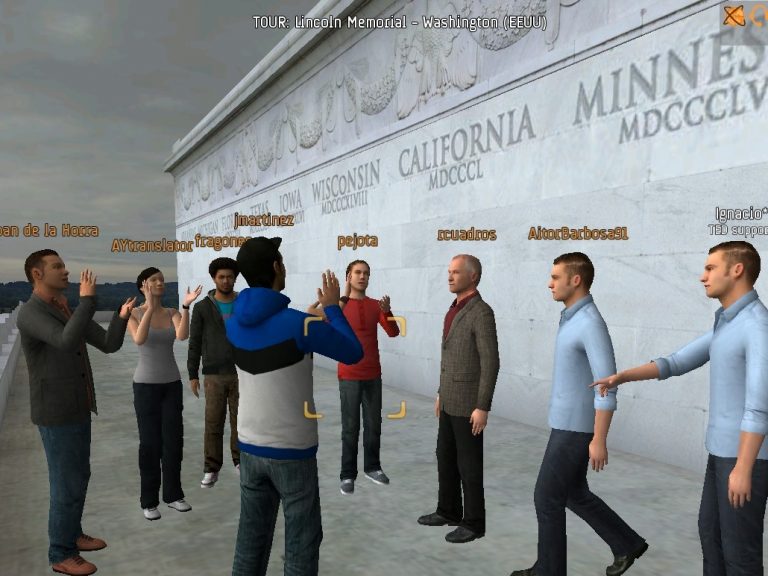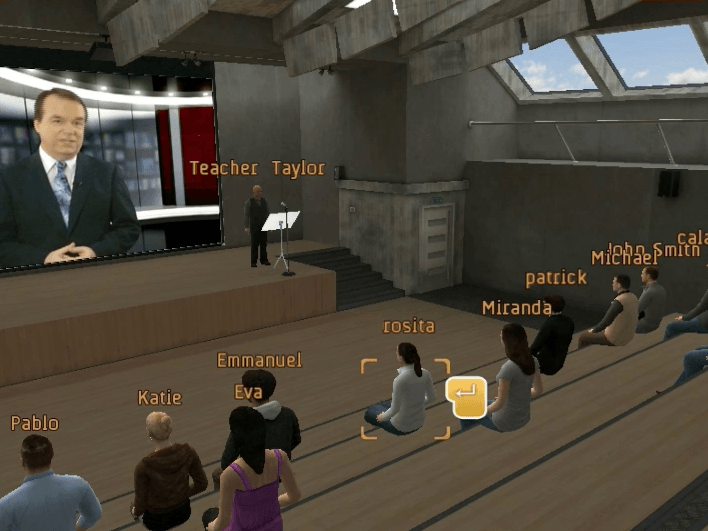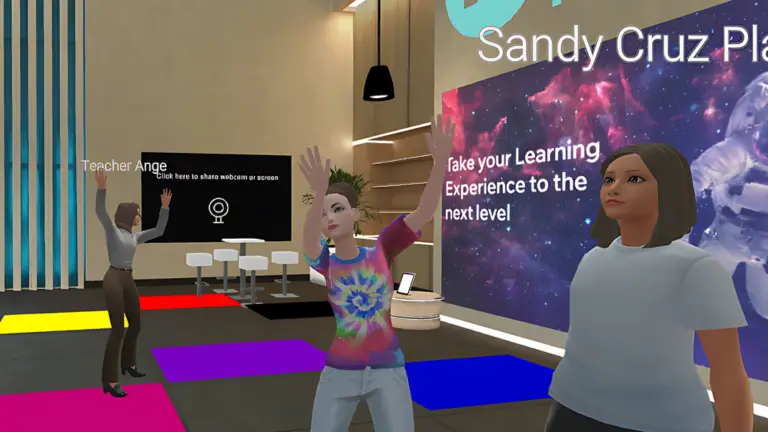The latest [virtual] revolution in corporate training
Online training nowadays is the most widely used educational model in the corporate sector, regardless of the type of business or market niche of the company. The advantages offered by this system are infinite. The time and cost savings are untouchable. The flexibility and accessibility for everyone couldn’t be more convenient. These pros, amongst many others, make it an essential tool for the employee training and formation process.
However this online training should not be limited exclusively to employees taking online courses. It’s crucial that it goes one step further to become a type of ‘business school’ that offers its attendees the possibility of receiving a virtual education with the maximum amount of interactivity and engagement as possible.
That said, virtual classrooms in businesses are especially important. By using tools that allow the creation of immersive and real experiences for employee training, these platforms can be recreated as a virtual campus. They are adapted to the learning and training of company employees, which offer more resources and fewer limitations than traditional methods.
Advantages of virtual classrooms for companies

This type of virtual platform adapted to company formation encourages teamwork through social and cooperative learning. Business training is one of the fields that is undergoing the most changes, and currently, virtual teaching is acquiring a major role within the Department of Human Resources.
Its benefits are innumerable, not only in terms of travel and material cost savings but also cover a lot of essential aspects. These are the main advantages of the Virtual classroom:
· Broad accessibility and interaction
Thanks to the rapid advancements of technology, today we can ‘attend’ virtual classes from any device and even our mobile devices when, where and how we want. This type of teaching removes spatial and temporal barriers by giving employees access to any content in real time.
The scenarios they recreate also allow the total interaction of all their assistants, who can ask questions, debate and connect with the rest of the members, sharing learning experiences and strengthening teamwork.
· High level of customization
With the aim of responding to specific needs, these virtual platforms allow maximum customization of the training sessions, as they give companies the ability to install specific designs and create each of the elements that make up the virtual classroom.
In fact, it is not only possible to adapt the teaching materials or functionalities, but also the appearance. This is one of the most striking advantages, since it is possible to create 100% immersive environments thanks to the use of avatars in the 3D world. Each employee will have their own personalized avatar, who is able to communicate in real time thanks to voice over IP.
· Very easy to use
One of the main characteristics that define virtual classrooms is that they’re extremely simple to use. Through intuitive interfaces, they allow quick access not only to the online training platform but to each of the materials that are shared in all types of formats.
In this digitalized society, we have a wide variety of devices with connections to the internet and we are accustomed to using tech apps. Accessing these virtual training sessions isn’t a problem for any participant with basic user knowledge.
· Greater resources
Its functionalities have evolved into platforms that include all the necessary resources for a 360º virtual class. Not only do they allow communication with images, but two-way, spatial sounds and 3D audio has been added, among many other options. Because of these extra features, employees can access any material from their device and interact in real time with other students or with the platform itself.
At the end of the virtual training, companies can carry out activities within the virtual world, where the metrics of the platform itself will give certain data to the event organizer which they can use to generate reports or statistics of the event.
Another function that can be performed in virtual classrooms is access to chats (either individually or to everyone) and forums. These options are profiled as key tools to encourage participation and facilitate more complete learning.
4 reasons to use 3D virtual worlds in training

Training actions enriched with digital experiences are already a reality within many companies. There are many reasons that lead HR managers opt for these alternatives. Among the most important, we can highlight the following:
1. 3D virtual environments are designed to provide collaborative digital learning experiences.
Therefore, their application in business training activities is essential. The possibilities that the virtual platform open up are huge, and all of them assure those who participate a totally different experience to what is achieved with traditional learning.
In this sense, technological advances have provided extremely innovative elements that enrich them to the maximum and give them an important added value. One of the most successful innovations in virtual classrooms is the use of interactive 3D avatars, a proposal by Virtway that allows the creation of real and immersive environments in virtual worlds. Each avatar can be customized with multiple options and creates the sensation of being present… without really being there in person.
2. 3D virtual worlds are collaborative spaces that adapt perfectly to the activities that characterize informal learning.
Participants have the opportunity to observe and participate in different training activities where they can apply the saying of “learn by doing”.
3. Virtual classrooms also favor authentic learning, represented by those training techniques focused on creating a connection between what is taught and real-world situations.
Virtual worlds are designed to create simulated environments where people can discuss and assimilate concepts and realities that occur every day at the workplace.
4. The new virtual platforms for company formation not only allow the development of specific competencies for each subject they deal with, but also stimulate another series of transversal competencies as essential as teamwork and communication.
The use of virtual classrooms to train employees is, without a doubt, a guarantee of success, both at the infrastructure level – since they allow flexible training to be offered regardless of place or time – and at the workers’ level, since they offer them alternatives to improve their skills in immersive and out of the ordinary environments.



